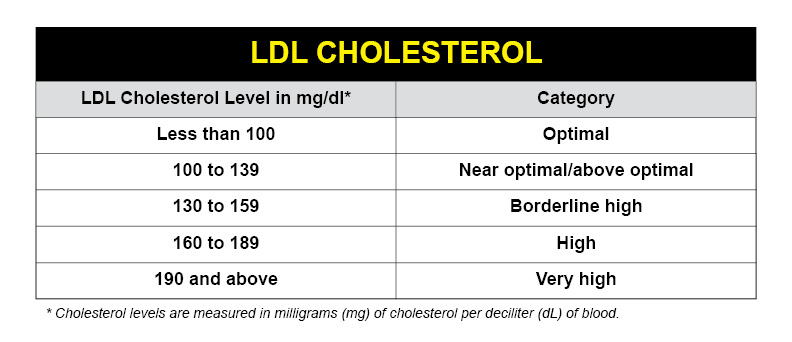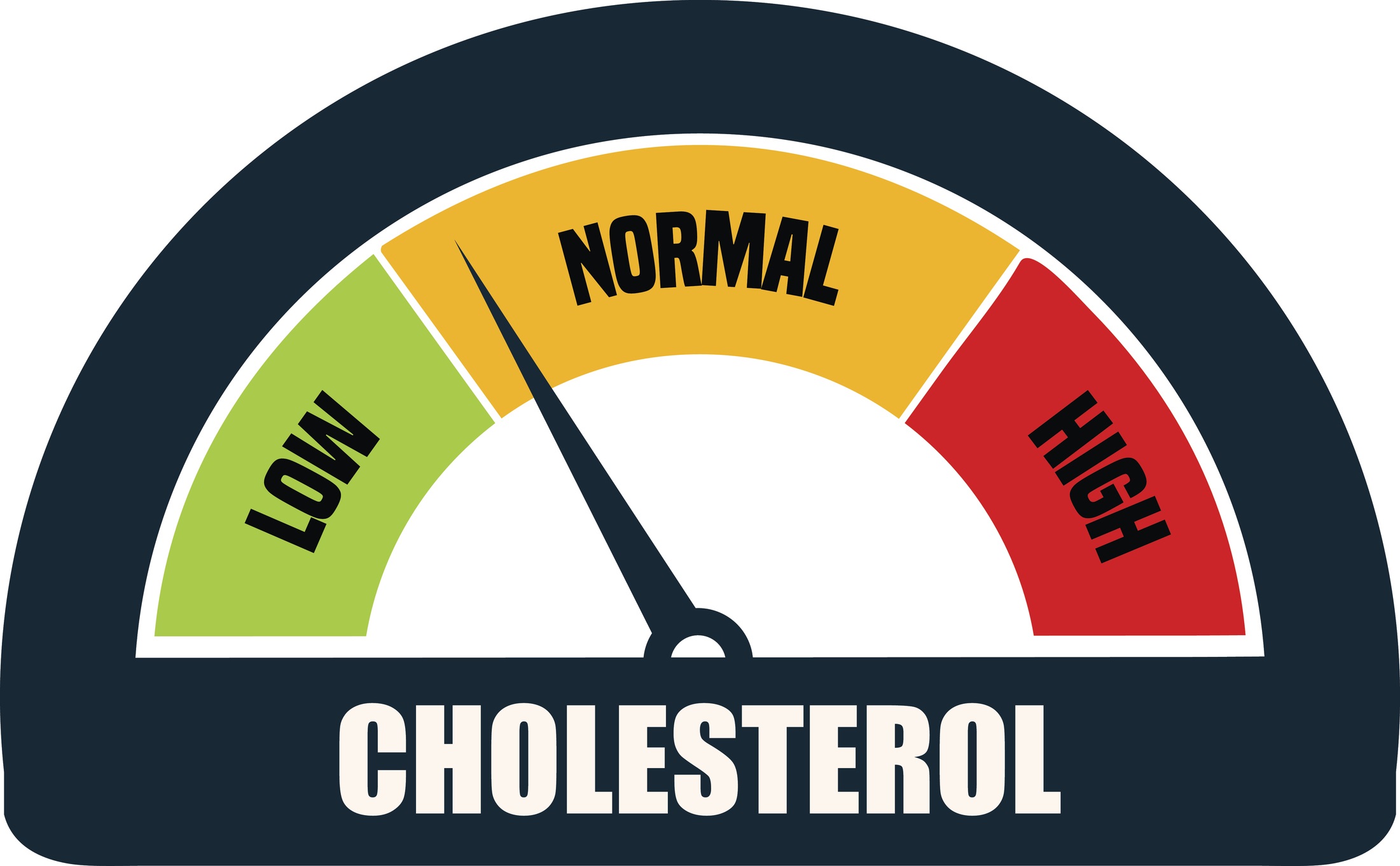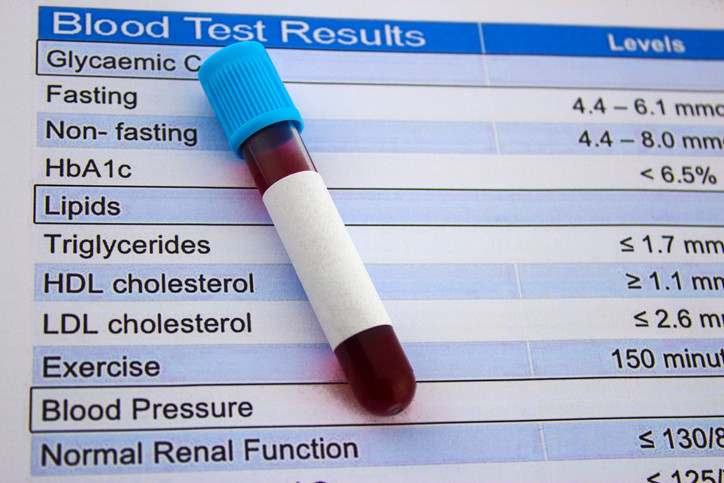Table of Contents
- The Importance of LDL Testing
- Current Guidelines for LDL Testing
- Personal Factors Influencing LDL Testing Frequency
- Target LDL Levels and Risk Categories
- Frequency of Regular LDL Testing
- Self-Monitoring LDL Cholesterol
- When to Consult a Doctor
The Importance of LDL Testing
LDL cholesterol, often referred to as "bad cholesterol," plays a crucial role in cardiovascular health. Monitoring your LDL levels is essential in identifying potential risks for heart disease and making informed decisions about your lifestyle and medical treatments.
Current Guidelines for LDL Testing
Various medical associations, such as the American Heart Association, recommend routine LDL cholesterol testing for individuals over the age of 20. These guidelines aim to detect abnormalities and guide appropriate interventions to prevent cardiovascular diseases.
LDL (Low-Density Lipoprotein) testing plays a crucial role in assessing an individual's risk for cardiovascular diseases. Regular LDL testing is recommended for individuals with a higher risk or those already diagnosed with heart-related conditions.
According to current guidelines, LDL testing frequency varies based on an individual's risk factors, overall health, and any pre-existing conditions. Here are some general recommendations:
- For healthy individuals without any known risk factors or cardiovascular diseases, LDL testing should typically be done every four to six years.
- For individuals with elevated risk factors such as obesity, diabetes, hypertension, smoking, or a family history of heart disease, more frequent LDL testing may be necessary. In such cases, LDL testing may be recommended every one to two years.
- For individuals who have already been diagnosed with heart-related conditions, or those who are undergoing treatment for high LDL cholesterol, LDL testing should be conducted more frequently. In such cases, LDL levels may be monitored every three to six months.
However, it is important to note that these are general guidelines, and the actual frequency of LDL testing should be determined by your healthcare provider based on your individual circumstances.
Regular LDL testing, combined with other risk assessment tools, can provide valuable information to help individuals and healthcare professionals make informed decisions regarding the prevention and management of cardiovascular diseases.

Personal Factors Influencing LDL Testing Frequency
Several factors, including family history, age, weight, diet, and existing medical conditions, can affect an individual's LDL levels. Regular testing intervals may need to be adjusted based on these personal characteristics to ensure accurate monitoring and management.
Regular testing of LDL (Low-Density Lipoprotein) levels is crucial for maintaining good heart health. However, the frequency of LDL testing can vary depending on various personal factors. Here are some key considerations when determining how often LDL should be tested:
Age
As individuals age, their risk of developing cardiovascular diseases increases. Older adults may need more frequent LDL testing to monitor their cholesterol levels and assess their heart health regularly.
Medical History
People with a history of high cholesterol, heart disease, or other related health conditions should have more frequent LDL testing to closely monitor their cholesterol levels and assess their response to medications or lifestyle changes.
Lifestyle Choices
Lifestyle choices, such as diet and exercise, play a significant role in cholesterol levels. Individuals who follow a healthy diet and engage in regular physical activity may need less frequent LDL testing compared to those with unhealthy habits.
Medication Usage
Some individuals may be taking cholesterol-lowering medications, such as statins, to manage their cholesterol levels. In such cases, LDL testing frequency may depend on the specific medication being used and the recommendations of the healthcare provider.
Family History
Having a family history of high cholesterol or heart disease increases the risk of developing similar conditions. Individuals with a family history may need more frequent LDL testing to monitor their cholesterol levels and take proactive steps to prevent heart-related issues.
It is essential to consult with a healthcare professional to determine the appropriate frequency of LDL testing based on individual circumstances and risk factors. Regular monitoring of LDL levels helps in early detection and management of potential cardiovascular risks.

Target LDL Levels and Risk Categories
Understanding the optimal LDL levels and risk categories helps you interpret test results accurately. Target LDL levels vary based on individual circumstances, and knowledge of these categories empowers individuals to take necessary actions towards a healthier lifestyle and potential treatment options.
LDL cholesterol is a type of cholesterol that can build up in the arteries and increase the risk of heart disease. It is important to monitor LDL levels regularly to assess cardiovascular health.
LDL Level Targets
The target LDL level may vary depending on an individual's overall health and the presence of other risk factors. However, as a general guideline, the following LDL level targets are commonly recommended:
| Risk Category | LDL Level Target (mg/dL) |
|---|---|
| Optimal | Less than 100 |
| Near Optimal/Above Optimal | 100 - 129 |
| Borderline High | 130 - 159 |
| High | 160 - 189 |
| Very High | 190 or higher |
Testing Frequency
The frequency of LDL testing is determined by several factors, including an individual's risk factors for heart disease, their overall health status, and any ongoing treatment plans. Here are some general recommendations for LDL testing frequency:
- For individuals with no major risk factors, a baseline LDL test may be sufficient initially. Subsequent testing can be done every 4-6 years.
- For individuals with one or more risk factors (such as smoking, hypertension, or a family history of heart disease), LDL testing should be done more frequently, typically every 1-2 years.
- For individuals who have already been diagnosed with heart disease or are at high risk, LDL testing should be done at least once a year, or as recommended by their healthcare provider.
- In certain cases, LDL testing may be more frequent if there are specific concerns or if a treatment plan is being monitored closely.
It is important to note that these are general guidelines and individualized recommendations should always be discussed with a healthcare professional.

Frequency of Regular LDL Testing
Determining how often to test LDL cholesterol levels can be influenced by factors such as age, health status, and personal risk factors. Regular testing is typically recommended every 4-6 years for healthy individuals but may need to be done more frequently for those with existing cardiovascular conditions or higher risk profiles.
The frequency of regular LDL testing depends on several factors such as your overall health, medical history, and risk factors for cardiovascular diseases. LDL (low-density lipoprotein) cholesterol is commonly referred to as the "bad" cholesterol that can build up in the arteries and lead to heart disease.
For individuals with no known risk factors or underlying health conditions, it is generally recommended to have a baseline LDL test between the ages of 20 and 30. After that, regular LDL testing is usually done every 4 to 6 years.
However, if you have certain risk factors for heart disease, your healthcare provider may advise more frequent LDL testing. These risk factors may include:
- Family history of early heart disease
- High blood pressure
- Diabetes
- Smoking
- Obesity
- Metabolic syndrome
- Age (men aged 45 or older and women aged 55 or older)
In such cases, your doctor may recommend LDL testing at least once every 1 to 2 years. Additionally, if you are already diagnosed with high cholesterol levels or are undergoing treatment for it, more frequent monitoring of LDL levels may be necessary.
It is important to consult with your healthcare provider to determine the appropriate frequency of LDL testing based on your individual circumstances. Regular LDL testing can help in assessing your risk for heart disease and enable timely interventions to maintain healthy cholesterol levels.

Self-Monitoring LDL Cholesterol
With the advent of at-home testing kits, self-monitoring of LDL cholesterol has become more accessible. This section discusses the benefits and limitations of self-testing and how it can complement regular medical evaluations.
Regular testing of LDL cholesterol levels is crucial in monitoring cardiovascular health and preventing potential complications. LDL (low-density lipoprotein) cholesterol is commonly referred to as the "bad" cholesterol and elevated levels are associated with an increased risk of heart disease and stroke.
The frequency of LDL testing varies depending on an individual's overall health, risk factors, and any existing medical conditions. In general, the American Heart Association recommends the following guidelines for LDL testing:
- For individuals with no prior heart disease or risk factors, it is recommended to have a baseline LDL cholesterol test in early adulthood, typically in their twenties.
- If the results are within the desirable range (less than 100 mg/dL), it is advisable to repeat the test every 4 to 6 years.
- For those with risk factors such as high blood pressure, diabetes, obesity, smoking, or a family history of heart disease, LDL cholesterol levels should be checked more frequently.
- Individuals who have been diagnosed with heart disease, have experienced a heart attack, or have undergone treatments like angioplasty or bypass surgery, should have their LDL cholesterol levels tested at least once a year or as advised by their healthcare provider.
It is important to consult with a healthcare professional to determine the appropriate frequency of LDL cholesterol testing based on individual health factors. Self-monitoring of LDL cholesterol through regular testing empowers individuals to take proactive steps in managing their cardiovascular health and making lifestyle modifications as needed.

When to Consult a Doctor
While routine LDL testing provides valuable insights, certain circumstances necessitate immediate medical attention. Recognizing symptoms, risk factors, and unusual fluctuations in LDL levels can guide individuals on when to seek advice from healthcare professionals.
If you are concerned about your cholesterol levels, it is important to consult a doctor for proper assessment and guidance. While LDL (low-density lipoprotein) cholesterol is commonly referred to as "bad cholesterol," elevated levels can increase the risk of heart disease. To stay proactive and maintain a healthy lifestyle, regular LDL testing is crucial.
When to Consult a Doctor
You should consult a doctor if you experience any of the following:
- Chest pain or discomfort
- Shortness of breath
- Numbness or weakness in the extremities
- Frequent dizziness or fainting
- Excessive fatigue
Additionally, if you have a family history of heart disease, it is recommended to seek medical advice and get your cholesterol levels tested.
How Often Should LDL be Tested
The frequency of LDL testing depends on various factors, including:
- Age: As you age, your cholesterol levels may change. It is advisable to get tested every five years for individuals aged 20 and above.
- Existing conditions: If you have high blood pressure, diabetes, or other risk factors, your doctor may recommend more frequent testing.
- Treatment plan: If you are undergoing cholesterol-lowering treatment, regular testing is necessary to monitor your progress and make any adjustments if needed.
- Health goals: If you are aiming for significant lifestyle changes or weight loss, more frequent LDL testing can help track the impact of these efforts.
It is important to note that individual circumstances may vary, and it is best to consult your doctor to determine the appropriate frequency for LDL testing in your specific case.

Key Takeaways
- LDL testing is vital for assessing cardiovascular health and managing heart disease risks.
- Current guidelines recommend routine LDL testing for individuals over 20 years old.
- Personal factors like family history and existing conditions impact LDL testing frequency.
- Understanding target LDL levels helps in making lifestyle and treatment decisions.
- Regular LDL testing every 4-6 years is recommended for healthy individuals.
- Self-monitoring of LDL cholesterol can be useful but should not replace regular medical evaluations.
- Consult a doctor immediately if experiencing concerning symptoms or unexpected changes in LDL levels.
Frequently Asked Questions
1. How does LDL cholesterol impact cardiovascular health?
LDL cholesterol contributes to the buildup of plaque in arteries, increasing the risk of heart disease and stroke.
2. Can LDL levels be managed through lifestyle changes alone?
In some cases, lifestyle modifications such as a healthy diet, regular exercise, and weight management can effectively lower LDL levels. However, additional interventions may be necessary depending on individual circumstances.
3. Are at-home LDL testing kits accurate?
At-home testing kits generally provide reliable results, but it is essential to follow instructions carefully and consult with healthcare professionals for comprehensive evaluations and guidance.



Recent Comments